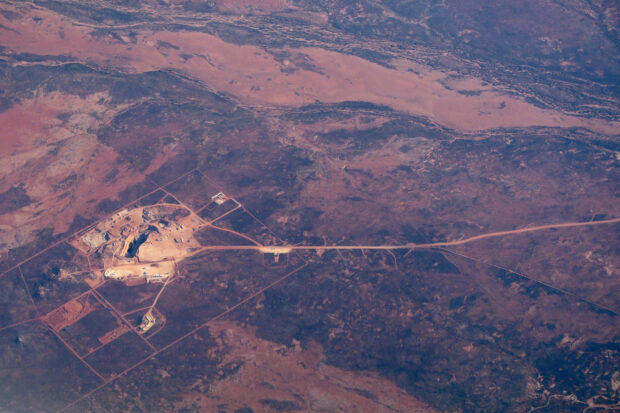Mining M&A spree to keep Australia dealmaking humming after $37B in Q1

A road leads to an open-cut mine in the area known as the Pilbara region located in the north-west of Western Australia. REUTERS/David Gray/File photo
MELBOURNE – As automakers and chemicals suppliers scramble to secure raw materials, resource-rich Australia has become a rare global bright spot with $37 billion worth of M&A deals in the first quarter, with the trend expected to continue in the near term.
The increased dealmaking activity is forecast to be mainly supported by cash-rich miners looking to expand quickly via acquisitions to tap into the rising resource demand and others looking to divest their fossil fuel portfolios, bankers and analysts said.
Newmont Corp’s $18-billion bid for Australia’s top gold producer Newcrest Mining last week has helped drive a 192-percent surge in inbound mergers and acquisitions (M&A) into Australia so far this year.
During the first quarter, there were $36.6 billion worth of announced M&A deals in Australia, as per Refinitiv data, but volatile markets and U.S. and European banking crises curtailed dealmaking elsewhere.
Australia’s deal volume in the first quarter was 3.5 percent higher than the same period last year. In comparison, the United States fell 44 percent, while global dealmaking was down 48 percent, according to separate Dealogic data.
“A perfect storm is brewing in resources M&A,” said Kam Jamshidi, a partner at law firm Herbert Smith Freehills in Melbourne. “Most powerfully, portfolio redesign for the energy transition is in full swing.”
Much of the M&A has focused on Australian miners because of its stable jurisdiction, said Samy Mansour, a partner at law firm Clayton Utz, as well as its vast mineral wealth.
Australia supplies just under half of the world’s lithium and is a significant producer of copper, nickel and rare earths and coal.
Newcrest’s long life copper reserves added to its allure while the red metal was a driving force for BHP Group’s $6.4 billion bid for Oz Minerals that was finalized this week.
Switch to growth
It also helps that global miners have switched into growth mode from years of austerity and handing back capital to shareholders, fund managers said.
After so many years of prioritizing shareholder returns over exploration, miners are finding few options to grow beyond buyouts given the high costs and length of time for exploring and building a new mine.
“The last five years has seen an austerity drive to hand cash back to shareholders. They realize now that exploration success has been few and far between, and the optionality in the portfolios is quite limited,” said Glyn Lawcock, head of resources research at investment firm Barrenjoey in Sydney.
The resources M&A boom is also being fueled by the move by governments to offer subsidies to industries that supply materials for electric vehicles, amid a push to diversify global supply chains after the COVID pandemic.
Albemarle Corp’s $3.7 billion bid for Australian lithium developer Liontown Resources is a good example of how green energy incentives such as the U.S. Inflation Reduction Act has made some suppliers more attractive, Lawcock added.
“Those sorts of credits make M&A and projects much more valuable today than yesterday,” he added.
Big miners reshaping their portfolios and divesting fossil fuels are also keeping M&A bankers busy.
BHP is letting go some of its lower grade metallurgical coal assets in Queensland state while Glencore, the largest thermal coal miner in Australia, has mooted a spinoff of its coal assets as part of its $22.5 billion play for Canada’s Teck Resources.
Potential buyers of carbon assets are also starting to include more private capital, which is less exposed to Western institutional investors’ climate mandates.
“Private capital is increasingly active, particularly where pockets of value is seen in the public space with quality businesses that have mis-stepped on performance or shareholder support, or are in regulatory transition,” said Michael Stock, head of Jefferies in Australia.